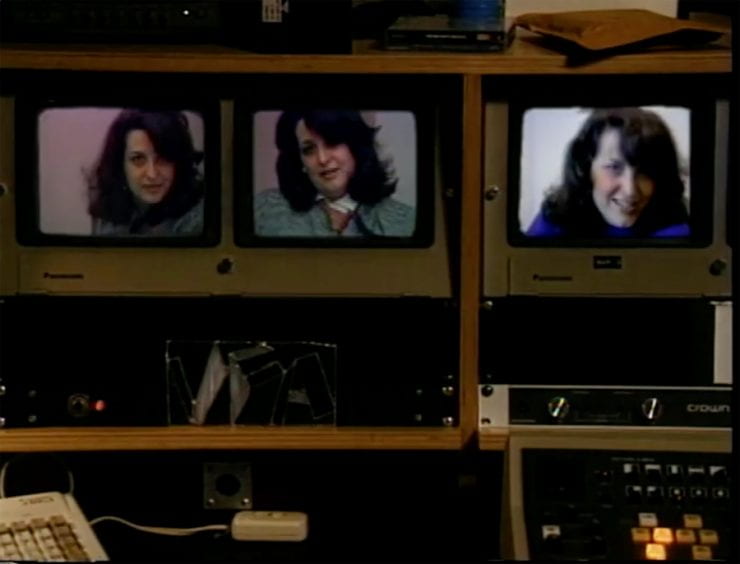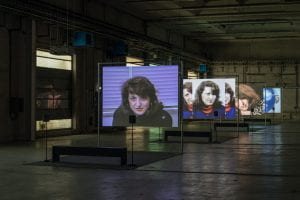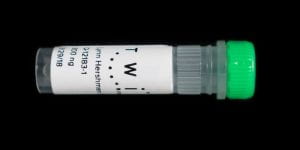Lynn Hershman Leeson, still from First Person Plural, the Electronic Diaries of Lynn Hershman(1984–96). Source: KW Institute for Contemporary Art, Berlin, Germany.
This post is the third in our series of guest submissions thinking about positionality in the archive. Jessica focuses on the work of Lynn Hershmann Leeson and the diaristic as an archival mode.
The diary is consciously unboundaried, alluding to the constraints that tether its literary counterparts, it can be private or public, controlled or chaotic, factual or fictive. Capturing the capaciousness of the genre, Virginia Woolf describes her own diary thus: ‘Something loose knit and yet not slovenly, so elastic that it will embrace anything, solemn, slight or beautiful that comes into my mind… I should like to come back, after a year or two, and find that the collection has sorted itself and refined itself and coalesced.’[1]
Woolf attests not only to the effusiveness of diaristic practice but also to the possibilities it presents for recording, preserving and organising – archiving – lived experience. Seizing on these possibilities, feminist authors have embraced the diary, traditionally derided as benignly feminine, as a subversive mode of documentation. An obvious example exists in Chris Kraus’s novel I Love Dick in which Kraus chronicles her thinly fictionalised libidinal desires and abjection in a series of letters formally constructed as diary entries written to the man, Dick, she transgressively obsesses over.[2]
Like her literary equivalents, feminist filmmaker, activist and artist Lynn Hershman Leeson espoused the formal potential of the diary in her own Electronic Diaries (1984-2019). Emerging from her 1970s art performances, her film diaries were conceived of as comprising four components – surveying four distinct periods of her life – but have since been amalgamated, exhibited in gallery contexts as a single entity.
Installation view of Lynn Hershman Leeson,Electronic Diaries, six video segments, 1984–2019, KW Institute for Contemporary Arts, Berlin. Courtesy of the artist (Source: Bomb magazine)
Hershman Leeson introduces the Electronic Diaries, announcing her intention to ‘reconstruct myself by talking to the video camera’ and to ‘examine foundational memories of violence and physiological harm’.[3] The result is an unflinching and at times disquieting document of her life in which she reports on body dysmorphia, unsated hunger, relationship breakdowns, sexual abuse and violence. Juxtaposing her recordings with stock footage of global events – the Cold War, South African apartheid, news reports on the ozone layer – Hershman Leeson anchors her subjective testimonies within wider socio-political frameworks, painstakingly situating the personal within the structural. In its confessionalism the project radically prefigures present-day new media formats such as the vlog but also resembles the structure of the archive, bringing together disparate materials which together function as testament to her past.
Jacques Derrida understood the appeal of the archive as a mechanism for remembrance, writing in 1996 ‘[we] have a compulsive, repetitive and nostalgic desire for the archive, an irrepressible desire to return to the origin, a homesickness, a nostalgia for the return of the most archaic place of absolute beginning.'[4] Importantly, he goes on to address the archive not as a static site of veracity but rather as an ambiguous, fragmented entity which constructs rather than merely conveys knowledge. With Derrida’s testimony in mind, Hershman Leeson’s project might be categorised thus, as a speculative archive, created out of ‘a nostalgic desire’ to, in her terms, ‘go to some depth of my own personal history.’[5]
In the same essay Derrida advocates a fundamental rethinking of the archive on the basis that the pervasive impact of new technologies threatens to transform its essential character.[6] Again, Derrida’s thesis proves illuminating, for Hershman Leeson, eschewing the limitations of the diary as purely literary, mobilises technology – the video camera – for purposes of self-preservation, conserving not only her thoughts and emotions but her corporality and, relatedly, sexuality, via moving image. This is evident when she performs seductively to the camera: knowingly inviting scopophilia and acknowledging herself as ‘the surveyed female’, she adheres to both John Berger’s dictum that ‘men act and women appear’ and Laura Mulvey’s notion of ‘Male Gaze’, seemingly understanding herself – including her body – as mediated by cultural systems and representations of gender.[7]
In 2019 Hershman Leeson went a step further in her strategies of preservation, encoding the archive of the Electronic Diaries onto a strand of DNA digital storage. She explains her motivations for doing so in practical terms, reasoning that the life span of DNA is far superior to that of a hard drive but then, more emotionally, remarks on a desire to enact agency over the repositories of her past, explaining: ‘I think having control over what the memory is and what the history is and the artifacts we choose to be represented by is a way of ensuring how we’re viewed in history.’[8] A fitting culmination to the Electronic Diaries, this final act speaks to the deeply personal nature of archives, encouraging those who work with them to appreciate that an archive need not be mediated by museums nor formalised by institutions but rather, like diaries, can be animated as a subjective mechanism by which an individual might navigate their past and ensure their future legacy via the technologies of their choosing.
Lynn Hersman Leeson, Lynn Hershman DNA, 2018, archival pigment print, 20 x 36.” (Source: Artforum)
Jessica Boyall is a researcher based in London. She’s currently a PhD candidate in the department of Media Arts at Royal Holloway, University of London where she is writing on the culture and politics of experimental film collectives in Britain in the 1970s and ’80s. Alongside her PhD, she has worked on numerous curatorial projects for the Victoria and Albert Museum (including on an archive project dedicated to researching and encoding the manuscripts, working notes and proofs of Charles Dickens), edited catalogues for the Design Museum and curated displays at the Museum of London. Her writing has appeared in a number of publications including the Guardian, New Left Review and ARTUK.
Endnotes
1. Virginia Woolf and Leonard Woolf. A Writer’s Diary: Being Extracts from the Diary of Virginia Woolf. New York: New American Library, 1968. p. 13.
2. Chris Kraus. I Love Dick, Semiotext(e): New York, 1997. Kraus writes to Dick in the formula of a diary, beginning her letters ‘Dear Dick, replicating the formula ‘Dear Diary’.
3. Lynn Hershman Leeson. Electronic Diaries Part 1. 1984. Accessed: (6 May 2021); Lynn Hershman Leeson. Electronic Diaries Introduction. Accessed: (6 May 2021).
4. Jacques Derrida. Archive Fever: A Freudian Impression, Chicago 1996 (modified translation).
5. Lynn Hershman Leeson. “They Said Media Wasn’t Art” In The Works, The Shed, 2019. (Accessed: 6 May 2021)
6. Jacques Derrida. Archive Fever: A Freudian Impression, Chicago 1996.
7. John Berger, Ways of Seeing (London: Penguin Books, 1972), p. 32; Laura Mulvey. ‘Visual Pleasure and Narrative Cinema’, Screen, 16 (1975), pp. 6- 18.
8. ‘Lynn Hershman Leeson: The Artist discusses her work with antibodies and DNA,’ ArtForum, June 29, 2020. (Accessed: 6 May 2021); Lynn Hershman Leeson. “They Said Media Wasn’t Art” In The Works, The Shed, 2019. (Accessed: 6 May 2021).




Published by